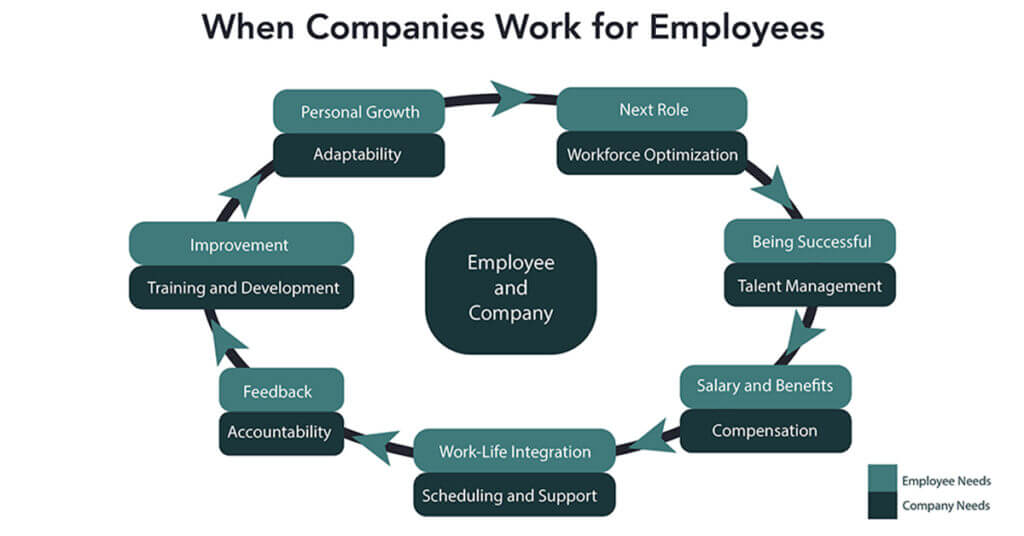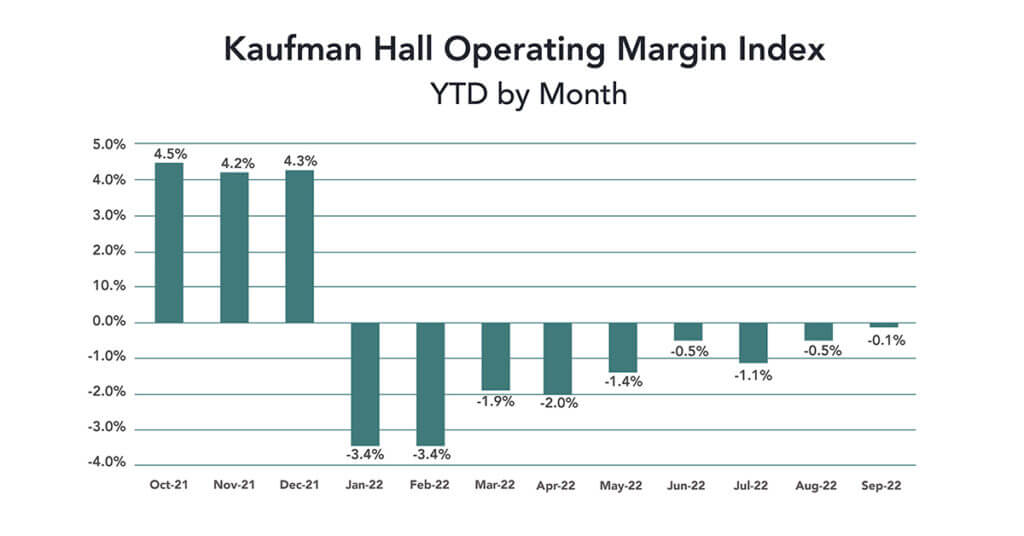November 10, 2022

The Way Healthcare’s Working Isn’t Working (Part 1): Changing Mindsets
Note: This is Part 1 in a series on the way healthcare is working — and what’s broken. Read Part 2 here.
On October 11, 2022, the emergency room at St. Michael Medical Center (SMMC) in Silverlake, Washington reached the breaking point. Only five nurses were on duty to care for over 45 patients. Panic ensued.
Unable to think of any other solution, RN Kelsay Irby called 911 and begged for help: “We’re drowning…We’re drowning…We’re in dire straits…Can someone come up here and help us.” The call center dispatched two firefighters to the hospital’s ER. For 90 minutes, they took vital signs, moved patients, cleaned rooms and changed bedsheets. After operations stabilized, the hospital manager thanked and dismissed the firefighters.
St. Michael is part of Virginia Mason Franciscan Health (VMFH), headquartered in Tacoma, Washington. At a November 2 community meeting, SMMC’s CEO Chad Melton described the hospital’s severe understaffing. SMMC already employed 180 contract workers and was searching desperately for 300 more. Despite their focused effort, no candidates had interviewed for vacancies in the ER Department.
The situation is still fraught. The UFCW 3000 union representing SMMC workers has called for CEO Melton’s and Chief Nursing Officer Jeanell Rasmussen’s resignations. In response, VMFH emphasized that its was “redoubling” its recruitment and professional development efforts. SMSH offers among the highest pay rates for nursing staff in Washington state.
For her part, RN Kelsay Irby is exhausted, angry and disheartened. She made the following comments at the meeting:
I know that I speak for myself and several co-workers that when we leave at the end of the day going, I honestly don’t even know if it’s worth it. It’s not just about the money. It is about going into healthcare to be able to take care of patients. When we can’t do that, when we go home at the end of our shift and feel like we failed you because we are not heard by our management. There are no words.
The way healthcare works isn’t working. Despite high pay, nurses are leaving the profession in droves. The passion that drove them to become caregivers has withered. Due to higher labor and supply costs, changing payment dynamics and fewer surgeries, hospitals are experiencing their worst year financially in decades (see chart).
Note: The Kaufman Hall Hospital Operating Margin and Operating EBITDA Margin Indices are comprised of the national median of our dataset adjusted for allocations to hospitals from corporate, physician, and other entities.
Source: Kaufman Hall, National Hospital Flash Report (October 2022)
SMMC’s current staffing challenges are extreme but not unique. Even as their profitability evaporates, American hospitals everywhere are struggling to find enough doctors, nurses, technicians and hourly workers to provide adequate care.
Throwing money at the problem hasn’t worked. One March 2022 survey found that 34% of nurses indicated that it was very likely they would leave their positions before the end of 2022. Of those, 44% cited burnout and high stress environments underlying their desire to leave.
More of the same approach of paying higher salaries for intolerable working conditions will yield more of the same dismal results. Noted author Simon Sinek has observed that “working hard for something we don’t care about is stress; working hard for something we love is passion.” The irony of healthcare’s workforce dilemmas is that few professions can match its potential for providing intrinsic meaning to its frontline workers.
Healthcare needs a mindset change. Hospitals and health systems must reignite clinicians’ passion for caregiving. They can only do so by optimizing their clinicians’ human potential as part of cohesive teams, supported by user-friendly technologies and systems, within purpose-driven organizations.
It sounds hard, and maybe it is, but the rewards and financial returns of reconnecting employees with organizational purpose are exponential. Before they will recommit heart and soul, caregivers must receive more support and guidance from their employers. It’s time for healthcare organizations to give their employees what they need, want and increasingly expect.
Asking What Companies Can Do for Their Employees
The concept that well-treated employees deliver great customer service and higher operating profitability is not new. In the 1980s, renowned consultant and bestselling author Frederick Reichheld began studying the economics of loyalty.
 Reichheld believed businesses that retain good customers, productive employees and supportive investors achieve superior performance levels over time. By contrast, businesses that ignore loyalty confront a future filled with uneven profitability, low growth and loss of market relevance.
Reichheld believed businesses that retain good customers, productive employees and supportive investors achieve superior performance levels over time. By contrast, businesses that ignore loyalty confront a future filled with uneven profitability, low growth and loss of market relevance.
During the 1990s, Reichheld founded Bain’s global Loyalty Practice. He and the practice are still going strong. Under Reichheld’s leadership, Bain quantified loyalty economics, created the Net Promoter Score and has advised scores of Fortune 100 companies. Even in digital work environments filled with dazzling technologies, loyalty-based businesses thrive and outperform their competitors.
In his 2011 book “The Ultimate Question 2.0,” Reichheld stressed the importance of having inspired employees in creating loyal customers.
[Many executives] forget that it’s impossible to create loyal customers without first inspiring a team of employees so they become promoters themselves. Who would go out of their way for a customer unless he or she is proud and inspired to be part of the team?
And while there are many ingredients of employee engagement — the right training and development, rewards, opportunity for growth, the feeling of being valued, and so forth — the real foundation is this: employees must be able to treat customers and colleagues in a manner that makes them proud. When leaders and their teams consistently treat people right, when they can be relied upon to do the right thing, then an organization can truly be worthy of loyalty.
When Paul Kusserow took the helm of the home care and hospice company Amedisys in 2014, he decided to put Reichheld’s loyalty theories into practice. At the time, Amedisys was struggling. The company had just fired its founder and long-time CEO, paid a large government fine and overinvested in an underperforming technology platform. Its stock was trading in the mid-teens.
Rather than dig into operations at the corporate headquarters, Kusserow packed a suitcase and spent the next two months interviewing Amedisys home care and hospice workers in the field. The employees are largely underappreciated, low-skilled and low-income women. They do the hard work of providing hands-on care to very sick and dying people.
Kusserow asked these frontline workers what he and the company could do to make their work lives better. Their answers filled dozens of notebooks and became the basis for Paul’s “Golden Rule” turnaround strategy. Paul bet Amedisys’ future on the proposition that treating its employees with care, support and respect would turbocharge the company’s operating performance, fuel growth and attract investment.
It worked. Employee retention increased. Quality scores improved. Profits soared. Under Kusserow’s leadership, Amedisys redefined the home-care sector and became its leading company. The company’s stock price moved consistently upward and peaked at over $300 a share in January 2021.
Kusserow retired as the company’s CEO in April 2022. He celebrated by taking a road trip with his wife. In 30 days, they visited over 100 care centers throughout the South, saying thank you to the very caregivers who made Amedisys’ transformation possible. Loyalty works.
Unlocking underutilized human potential triggered Amedisys’ success. Post-COVID, optimizing human potential is still the key imperative for healthcare leaders. They desperately need to regain their employees’ loyalty to transform archaic business practices and deliver value-based care. These leaders need to figure out how to win back employees like St. Michael’s Kelsay Irby.
The real question, of course, is how to reignite the spark. During COVID, remote work, video connectivity and new technologies changed the character of work in fundamental ways. Living through COVID also led many workers to reexamine why and how they work. Under this scrutiny, record numbers changed professions, moved to new locations and/or developed new relationships with their managers and coworkers.
There’s no going back to the pre-pandemic world of work. Companies must move forward by creating new world-of-work paradigms. Doing this requires embracing employee loyalty as a foundational goal, asking what they require to succeed, listening to their answers and then responding with proactive policies, programs and procedures. This is how Satya Nadella engineered Microsoft’s turnaround.
 Since Satya Nadella became CEO in 2014, Microsoft’s market value has more than quintupled. Nadella believes that Microsoft’s success has come through energizing its employees to find value for themselves, the company and the world. This belief came through loud and clear during a 2018 interview with psychologist Michael Gervais when Gervais asked Nadella to define mastery.
Since Satya Nadella became CEO in 2014, Microsoft’s market value has more than quintupled. Nadella believes that Microsoft’s success has come through energizing its employees to find value for themselves, the company and the world. This belief came through loud and clear during a 2018 interview with psychologist Michael Gervais when Gervais asked Nadella to define mastery.
For me, it [mastery] comes down to being in touch, deeply in touch, with what gives you purpose. One of the things that I say a lot is, “What if you took what you do at Microsoft and flipped it? Hey, I don’t work at Microsoft, Microsoft works for me.”
And that is because you are a someone who has a particular passion, a particular personal philosophy, and you are able to, in fact, turn what is considered work into an instrument of you realizing the deeper meaning in pursuing your personal philosophy, or passion.
To me, mastery is that — that ability to lead a more purposeful life, and then take all of life and turn it into that platform. Because I think that’s all we have, so we may as well make use of it.
What Nadella observed in 2018 is even more applicable in today’s post-COVID work environments. It takes self-actualizing platforms for individuals to integrate their work and life activities efficiently and effectively. When optimized, work-life integration gives joy and purpose to employees while they create value for their companies, customers, coworkers and the world.
The good news is that the right loyalty mindset aligns perfectly with an evolving work-life paradigm that elevates the individual, sustains the company and improves the world.
The Wheel of Fortune
The concept of work-life balance has become an anachronism. Life infuses work 24/7 and vice versa. The challenge and opportunity for companies today is developing enriching work environments that welcome and engage employees as whole persons with individualized wants, needs and desires.
When work and life integrate seamlessly, liberated employees expand their reach and capabilities. They create value for themselves, customers, their companies and everyone around them. Value creation of this magnitude requires companies to address employees’ immediate challenges for employees in concert with tailored development plans. Great companies do not let the urgent crowd out the important. They accommodate both employees’ short and long-term needs.
Cultivating human empowerment requires a managerial mindset that explores what companies can do to help employees become their best selves, professionally and personally. Motivated employees go the extra mile for customers when they know the company goes the extra mile for them.
This is the loyalty effect that Fred Reichheld describes. It’s what Paul Kusserow triggered at Amedisys by engaging frontline caregivers. It’s how Satya Nadella enables Microsoft employees to achieve mastery at home as well as on the job.
The chart below depicts how companies can create a continuous process for engaging employees. The process has seven components that intermingle with one another to anticipate opportunities, develop capabilities, accommodate personal circumstances, provide accountability and bring joy to the workplace. Importantly, this engagement platform simultaneously aligns and satisfies both individual employee and company needs.

When companies work for employees, they create an environment that fosters honesty, trust, respect, accountability, adaptability and recognition. Teams thrive when members understand their roles and can count on one another. Everybody wins.
Technologies can help optimize the components of high-functioning corporate cultures. They can reduce friction. They can nudge behaviors. They can speed learning. They can anticipate problems. They can identify opportunities.
What technologies cannot do is create the human-centered mindset that sustains individual and group engagement with noble purpose. That requires leadership.
Conclusion: Believe in People
A core problem of struggling organizations is that they rely on transactional mechanisms to drive retention and recruitment. Transactional exchange has limited application and often creates collateral damage. Great companies do more than compensate their employees well. They also feed their souls. They give meaning and purpose to life at work.
Healthcare’s transactional mindset and the dysfunction it creates are corrosive. They constitute the fundamental reasons why so many healthcare organizations, like St. Michael Medical Center, are failing financially, losing productive employees and routinely disappointing consumers.
Since the way healthcare works today isn’t working, it’s time to change course. Cultivating loyal employees is the key to organizational transformation. They find novel ways to serve and delight patients. Engaged employees are healthcare’s future. Treat them well and let them show the way.
Part 2 of this series will explore how healthcare organizations can change their mechanics along with their mindsets to serve their employees, patients and communities with greater effectiveness, compassion and sustainability.






